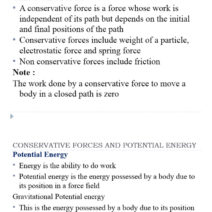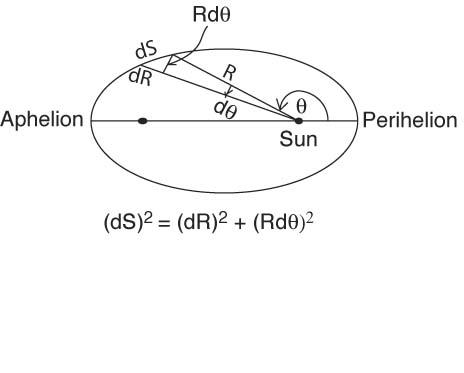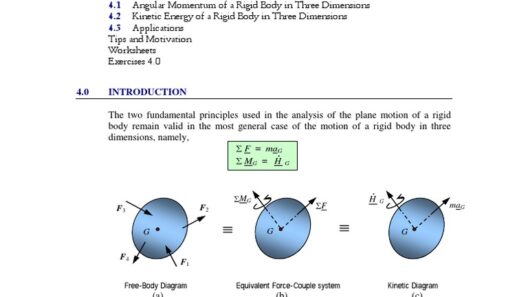When one gazes at the celestial ballet of planets moving in elliptical orbits around their stars, it evokes a deep fascination. The elegant paths carved out by the gravitational dance raise a compelling question: Is energy conserved in an elliptical orbit? To comprehend this, one must delve into the principles of classical mechanics, particularly the laws established by Johannes Kepler and the insights provided by Isaac Newton. Understanding energy conservation in this context is not just an intellectual exercise; it also has profound implications for our understanding of the universe and the intricate systems within it.
First, let’s clarify what an elliptical orbit is. An elliptical orbit is characterized by its oval shape, defined by two foci, one of which is occupied by the central body, like a star. The orbits of planets are not merely circular; they exhibit eccentricities that make them elliptical. Kepler’s First Law of Planetary Motion, or the Law of Ellipses, postulates that planets move in ellipses with the sun at one focus. This foundation sets the stage for examining the conservation of energy in such orbits.
To analyze energy in elliptical orbits, one must consider both kinetic and potential energies. Kinetic energy, which varies with the planet’s velocity, can be mathematically expressed as KE = 0.5mv², where ‘m’ is the mass of the planet and ‘v’ is its velocity at any given point in its orbit. In contrast, gravitational potential energy (PE) is dictated by the gravitational force acting between the orbiting body and the central mass. This relationship is described by PE = -GMm/r, where ‘G’ is the gravitational constant, ‘M’ is the mass of the central body, ‘m’ is the mass of the orbiting body, and ‘r’ is the distance between the two masses.
As a planet traverses its elliptical orbit, its distance from the central body varies, leading to fluctuations in both kinetic and potential energy. When a planet is closest to the star, at a point referred to as periapsis, it possesses maximum kinetic energy and minimum potential energy. Conversely, as it reaches aphelion—the furthest point from the star—its speed decreases, resulting in maximum potential energy and minimum kinetic energy. This interplay reflects a fundamental concept: although kinetic and potential energy are continually exchanging, the total mechanical energy (the sum of kinetic and potential energy) remains constant throughout the orbit, provided that no external forces like friction are at play.
Now, one may wonder about the implications of this energy conservation principle. One fascinating observation is that though the speed of planets varies, their total energy remains in a state of equilibrium. This observation can also be extended to various systems within physics. For instance, the phenomenon is reminiscent of energy transitions in various environments—think of how energy shifts are crucial not just in planetary motion but also in ecological systems and renewable energy applications on Earth. Such parallels inspire a deeper appreciation of both celestial mechanics and terrestrial energy conservation.
When considering the conservation of energy in elliptical orbits, one also cannot ignore the role of angular momentum. Governed by the conservation principle, angular momentum takes center stage in celestial mechanics. As a planet expedites its movement toward periapsis, it sweeps out areas faster, thereby conserving its angular momentum. The correlation between radius and velocity underscores the elegant simplicity of orbital mechanics, where every action finds a counterpart in the cosmos.
The interaction of kinetic energy, potential energy, and angular momentum invites another layer of complexity: eccentricity. Eccentricity measures the deviation of an orbit from a perfect circle; in elliptical orbits, this parameter plays a critical role in determining energy ratios at various points in the trajectory. A highly eccentric orbit can lead to remarkable variations in speed and, consequently, energy states throughout its path. Herein lies another reason for the fascination with elliptical orbits—each planet tells a specific story about its relationship with its central star, influenced heavily by its unique orbital dynamics.
Beyond the immediate physical implications, the conservation of energy in elliptical orbits also serves as an analogy for environmental concepts. Consider the trajectory of energy conservation in our own ecosystem. Just as celestial bodies maintain an equilibrium via energy exchanges, sustainable practices strive to balance energy output and consumption. Our understanding of energy conservation in physics enhances our ability to tackle pressing environmental challenges. By recognizing that energy must be preserved and judiciously used, we gain insight into fostering sustainability on our planet.
In conclusion, the question of whether energy is conserved in an elliptical orbit can be definitively answered: yes, it is. The principles that govern these celestial paths reveal a symphony of kinetic and potential energies harmonizing within a framework of conservation laws. Through the lens of physics, we gain not only knowledge about planetary orbits, but also valuable lessons applicable to Earth’s energy challenges. This intertwining of celestial mechanics and environmental sustainability highlights a profound truth—whether in the vastness of space or within the confinements of Earth, energy conservation is a principle that remains ever-relevant.







